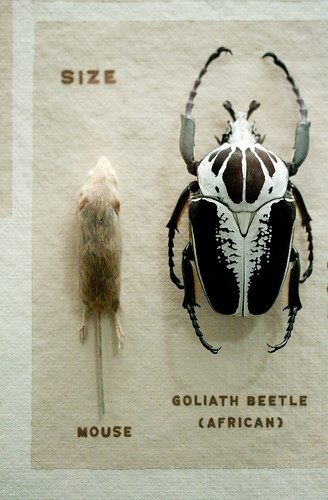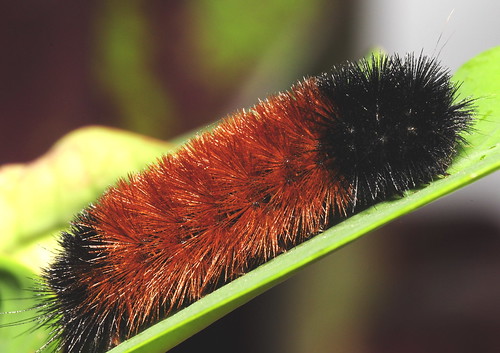This may be the “Insect Minute,” but a tick is no insect! Ticks are a part of the subclass Acari making them close relatives of mites and distantly related to spiders. Ticks have four life stages, beginning as an egg that hatches into a six-legged larva. The six-legged larva immediately sets out to look for an appropriate host to find a blood meal. Ticks, both male and female, need blood to continue to the next stage of development. Once the larva has fed it will molt into an eight-legged nymph which, after feeding, will molt into a reproductive adult.
Tick Life Cycle from Centers for Disease Control and Prevention
Ticks find their hosts through detecting the breath, body odor or body heat of an animal or through questing. When a tick is questing for a host it will climb to the end of a leaf or tip of a blade of grass and hold on tightly with the last two sets of legs and stretch the fore legs out, holding this position until an animal comes by to climb on to. Once the tick is “aboard” it will begin looking for a place of attachment, preferably a location with thinner skin. Location found, they cut the skin’s surface and insert the feeding tube. Ticks maintain attachment either by having a barbed feeding tube or secreting an adhesive like substance that sticks the tick in place.
The most common ticks found in NC are the American Dog tick, the brown dog tick, the Lone star tick and the black-legged or deer tick. The American dog tick and brown dog tick both carry Rocky Mountain spotted fever. The brown dog tick is entirely dark brown and the American dog tick is brown with white markings on the body and legs. The lonestar tick is named for the single white mark in the center of its otherwise brown body and carries the disease Ehrliciosis. The black-legged or deer tick is easily recognized by its black legs and is a carrier of Lyme disease.
from Center for Disease Control and Prevention
Ticks can be difficult to avoid, but there are methods of prevention that can be employed to protect you. If you are going into an area where you would expect to find ticks, like a wooded area or a grassy meadow, tuck your pants into your socks. It may look
‘dorky’, but it can prevent a tick from quietly latching on to your leg catching you completely unaware. If you want to increase the protection, as well as “style points”, wrap the area where your pants tuck into your socks with duct tape. New suitors may not come-a-callin’, but neither will the ticks. If you will be going camping, hunting or frequenting areas where ticks are present it is a good idea to spray your pants, socks and shoes with permethrin (allowing it to dry before donning the clothes), a chemical that has proven to be very effective in warding off ticks. WARNING*** Permethrin is toxic in its liquid form, so use gloves when applying it, do not get it on your skin or in your nose or mouth.
If you do find a tick on your person and it has latched on, it is important that you move it properly. Not only do ticks carry bacterial diseases they transfer to you through their bite but they also carry different types of staphylococcus bacteria that can cause an infection at the site of the bite. Once you locate the tick, do not bother with trying to suffocate it with oils or fingernail polish in attempt to make the tick release your skin, it should be removed immediately. Remove the tick by grasping it, with tweezers, as close to your skin as possible and then squeeze the tick tightly and pull upwards, being careful not to twist or jerk the tick. Once the tick is removed sterilize the area with rubbing alcohol or by washing the area with soap and water.
Now, what to do with the tick? DO NOT THROW IT AWAY! We recommend taping the tick to a calendar on the day in which you found it. If you begin to exhibiting a rash or flu-like symptoms, visit a doctor immediately and bring the tick with you. It may aid the doctor in properly diagnosing you more quickly.
Do you want to have a guide to ticks in your pocket? Check out this really cool app that was developed by a professor and his students here at North Carolina State University!
Transcript of Insect Minute 5 – Ticks
Hi this is Heather with your Insect Minute brought to you by WKNC and the NC State Insect Museum.
We have a special report on ticks this week! We go to Buzz Beesome in the field to find out more!
Buzz…
Buzz: We have here Miss Henrietta Hemophile. Now madam, you are a tick are you not? So, you’re not a true insect is that right? You’re a member of Acari?
Tick: Yes, that’s right, our closest relatives are mites (mites)
Buzz: and you’re getting ready to add to the family I see.
Tick: I am indeed! Soon I will lay my eggs in the grasses around my habitat
Buzz: and you just ….. leave them in the grass?
Tick: They’ll be fine! Soon adorable little six-legged larvae will hatch and immediately begin searching out an appropriate host for a blood meal.
Buzz: uh….Blood meal?
Tick: Yes, ticks, male and female, need blood to continue development. (like milk for mammals) Once the larva feeds it molts into an 8-legged nymph which, after feeding develops into an adult.
Buzz: And how do you FIND this……blood?
Tick: In two ways, either through detecting the breath, body odor or body heat of the animal or through questing.
Buzz: Questing?
Tick: We climb to the top of grasses or leaves and hold on, with our front legs outstretched until an animal comes along to climb on to. It can take a while to find the right host. It takes some of us up to 3 years to complete development. In fact, a lot of us don’t make it.
Buzz: I am saddened, really, but that IS hard to believe with all the ticks I’ve carefully removed using tweezers and sterilized with alcohol! Back to you in the studio, Heather
Thanks Buzz!
If you would like to find out more about ticks, how to identify them and the diseases they carry visit the museum’s website at insectmuseum.org where you also find information about our museum and read our blog where we talk about interesting stuff going on in the world of entomology.
Listen to episode five.




